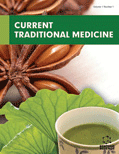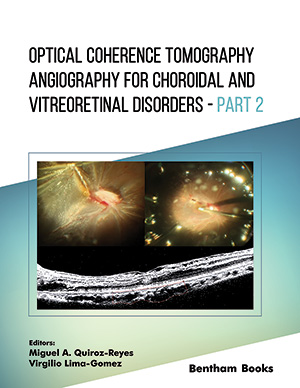Abstract
In this modern era, medicinal plants and their phytoconstituents have received keen attention from researchers due to the various therapeutic implication found in different pharmacological investigations. Among millions of medicinal plants, Gloriosa superba is one of the therapeutically important ornamental climbers that has been traditionally used to cure several diseases such as intestinal worms, skin ailments, and joint pain. Researched data also indicated that the active principle of Gloriosa superba can produce significant therapeutic action by affecting specific pathophysiological targets of various ailments. In the last few years, its Crude extract, isolated active principles, and novel formulations have been claimed for several pharmacological activities such as antidiabetic, hepatoprotective, anticancer, antimicrobial, anthelmintic, antivenom, analgesic, antiarthritic, etc. The outcome of pharmacological research confirmed that this herb might be a source of precious phytochemicals to combat Enigmatic diseases such as cancers, and autoimmune diseases. The present article gathered the detailed pharmacological explorations on Gloriosa superba to contribute to the development of strategies for effective delivery of its Phytoconstituents to cure critical diseases.
Keywords: Gloriosa superba, ethnopharmacology, colchicine, medicinal plant, phytoconstituent, diseases.
[http://dx.doi.org/10.1039/CT9150700835]
[http://dx.doi.org/10.1007/978-3-642-57970-7_10]
[http://dx.doi.org/10.1016/S0176-1617(11)81317-9]
[http://dx.doi.org/10.1508/cytologia.40.751]
[http://dx.doi.org/10.5897/JMPR11.913]
[http://dx.doi.org/10.4103/0971-4065.145423] [PMID: 26060369]
[http://dx.doi.org/10.1016/j.fitote.2008.06.003] [PMID: 18678232]
[http://dx.doi.org/10.1023/A:1014129225583]
[http://dx.doi.org/10.1007/978-94-007-6603-7]
[http://dx.doi.org/10.1016/j.jep.2007.10.006] [PMID: 18055146]
[http://dx.doi.org/10.1016/j.fitote.2007.07.015] [PMID: 17855018]
[http://dx.doi.org/10.1023/B:BIOC.0000006511.67354.7f]
[http://dx.doi.org/10.1016/j.jopr.2013.02.012]
[http://dx.doi.org/10.13057/biodiv/d100409]
[http://dx.doi.org/10.9734/IRJPAC/2019/46807]
[http://dx.doi.org/10.1039/C4RA12337A]
[http://dx.doi.org/10.1177/1934578X1601100319] [PMID: 27169190]
[http://dx.doi.org/10.1177/1934578X1701200817]
[http://dx.doi.org/10.1186/s12870-021-02843-8] [PMID: 33546591]
[http://dx.doi.org/10.1135/cccc19841536]
[http://dx.doi.org/10.3109/13880200903081770] [PMID: 20645842]
[http://dx.doi.org/10.1080/14786410601129507] [PMID: 17487621]
[http://dx.doi.org/10.1021/acs.jnatprod.6b01024] [PMID: 28211687]
[http://dx.doi.org/10.3390/molecules24152772] [PMID: 31366123]
[http://dx.doi.org/10.25081/cb.2020.v11.6048]
[http://dx.doi.org/10.1136/pgmj.65.768.752] [PMID: 2694138]
[http://dx.doi.org/10.1136/bmj.1.5494.1023] [PMID: 5909848]
[http://dx.doi.org/10.1186/s40360-016-0069-6] [PMID: 27324655]
[http://dx.doi.org/10.1016/S0196-0644(81)80239-9] [PMID: 7018330]
[http://dx.doi.org/10.1016/S0735-6757(98)90228-5] [PMID: 9786547]
[http://dx.doi.org/10.4103/0976-500X.81895] [PMID: 21772764]
[http://dx.doi.org/10.4314/tjpr.v10i2.66560]
[http://dx.doi.org/10.4103/0973-8258.56277]
[http://dx.doi.org/10.1007/978-3-642-18659-2]
[http://dx.doi.org/10.1016/j.foodchem.2014.05.002] [PMID: 25038696]
[http://dx.doi.org/10.1007/s11095-012-0828-z] [PMID: 22814904]
[http://dx.doi.org/10.4172/2157-7439.1000390]
[http://dx.doi.org/10.1155/2018/4924186] [PMID: 30057593]
[http://dx.doi.org/10.1016/j.amjms.2017.06.005] [PMID: 29078848]
[http://dx.doi.org/10.33786/JCPR.2015.v06i01.002]
[http://dx.doi.org/10.1080/17458080.2021.1872781]
[http://dx.doi.org/10.1089/cbr.2015.1954] [PMID: 27093343]
[http://dx.doi.org/10.1016/j.dib.2017.08.003] [PMID: 28856183]
[http://dx.doi.org/10.1016/S0377-1237(02)80140-X] [PMID: 27407392]
[http://dx.doi.org/10.1007/BF02354830] [PMID: 7242529]
[http://dx.doi.org/10.1016/S1995-7645(11)60185-5] [PMID: 21967700]
[http://dx.doi.org/10.1016/S2222-1808(14)60648-4]
[http://dx.doi.org/10.1016/S1357-2725(03)00259-0] [PMID: 14687914]
[http://dx.doi.org/10.1016/j.intimp.2010.11.018] [PMID: 21109035]
[http://dx.doi.org/10.1016/S0014-827X(01)01111-9] [PMID: 11680812]
[http://dx.doi.org/10.1016/j.jdermsci.2012.06.008] [PMID: 22795618]
[http://dx.doi.org/10.1111/1523-1747.ep12582820] [PMID: 8823363]
[http://dx.doi.org/10.1111/1523-1747.ep12613492] [PMID: 7528246]
[http://dx.doi.org/10.1038/jid.2011.458] [PMID: 22277938]
[http://dx.doi.org/10.1155/2014/249367] [PMID: 25435888]
[http://dx.doi.org/10.22159/ajpcr.2019.v12i6.33059]
[http://dx.doi.org/10.1007/s40097-014-0083-4]
[http://dx.doi.org/10.1016/j.msec.2015.01.042] [PMID: 25686966]
[http://dx.doi.org/10.1016/j.jtusci.2014.04.006]
[http://dx.doi.org/10.1080/14756360701747409] [PMID: 18615278]
[http://dx.doi.org/10.1016/S2221-1691(12)60154-3]
[http://dx.doi.org/10.5530/pj.2017.6s.162]































